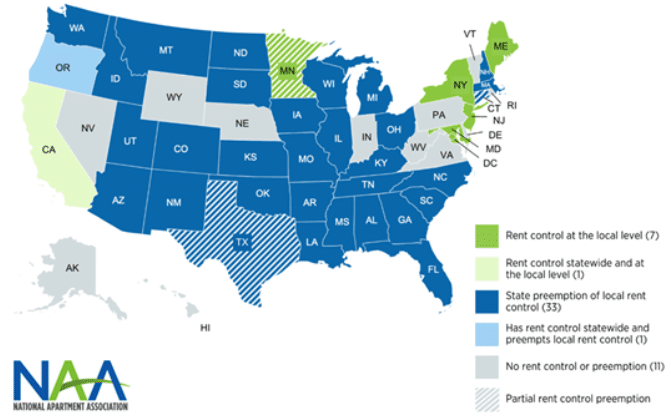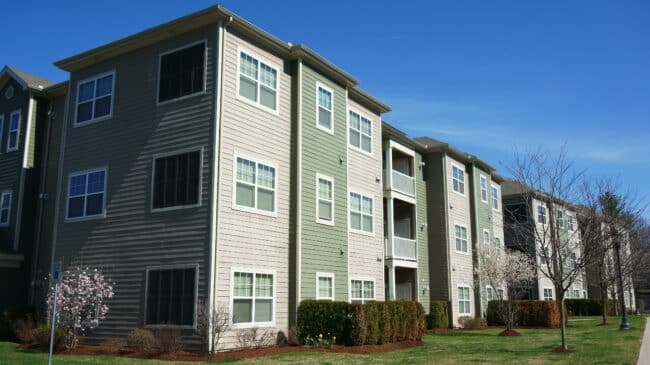Summary
California Proposition 33 would remove state laws preventing local governments from adopting rent control policies.
Fiscal Impact
California Secretary of State Shirley Weber says that the passage of Prop. 33 would result in “a potential reduction in state and local revenues in the high tens of millions of dollars per year over time. Depending on actions by local communities, revenue losses could be less or more.”
Proponents’ Arguments
Proponents of Prop. 33 argue that rents across the state are too high, causing homelessness and making those with lower incomes struggle to afford housing. They say that local governments need to be able to impose rent controls to prevent rents from rising any higher, and decisions about rent control should be made by local governments.
Opponents’ Arguments
Opponents argue that Prop. 33 would not increase funding for affordable housing, force local governments to build more affordable housing or provide immediate relief to homeless people.
They point out that research on rent control programs around the country shows that “extreme rent control stifles new housing construction, perpetuating shortages and driving up costs for renters.” Moreover, Prop 33 “allows local politicians to tell single-family homeowners how much they can charge to rent out their homes—even if they just want to rent a single room. Homeowners will be subject to regulations and price controls enacted by local politicians.”
Some legislative leaders and unions also oppose Prop. 33, saying it contains a ‘Trojan horse’ provision allowing cities that want to block new development to “impose steep affordability requirements that would effectively freeze growth,” according to Politico. Make no mistake: This ballot measure will end housing production in California full stop,” Assembly Appropriations Chair Buffy Wicks told Politico.
Discussion
California’s housing crisis is severe, with the cost of housing almost doubling since 2010. At the same time, homelessness has skyrocketed—in 2022, there were 437 unhoused Californians per 100,000 Californians statewide. This is the proponents’ third attempt to get a version of Prop. 33 passed, as voters rejected the previous two attempts. California does have some limited state and local rent control rules, but they do not set hard limits on the rents owners can charge.
The primary cause of price hikes is a shortage of housing supply. Demand is simply outstripping affordable and available housing units. Effective policy should focus on adding housing units in the private market to meet demand. California has passed many laws in the last few years to attempt to increase the supply of housing. Unfortunately, one certain effect of rent control is reducing the supply of rental housing available now and built for the future, an outcome that would severely undermine the past few years’ reforms.
As with much economic research, the conclusions on rent control can be a bit hard to sort out. Economics 101 tells us that in a free market, rent control’s price cap decreases profitability, inevitably leading to less rental housing being available. However, some studies disagree. This article reviews many studies that find positive effects of rent control, mainly for those who live in rent-controlled units whose costs are frozen. The research is clear that some people do benefit from rent control.
However, a 2012 University of Chicago survey of a diverse panel of economists found that 81% agreed that local rent control ordinances have not had a positive impact on the amount and quality of rental housing. A very recent comprehensive survey of the effects of rent control concludes:
[A]lthough rent control appears to be very effective in achieving lower rents for families in controlled units, its primary goal, it also results in a number of undesired effects, including, among others, higher rents for uncontrolled units, lower mobility and reduced residential construction. These unintended effects counteract the desired effect, thus, diminishing the net benefit of rent control.
The Brookings Institution has concluded, “Rent control appears to help affordability in the short run for current tenants, but in the long run decreases affordability, fuels gentrification, and creates negative externalities on the surrounding neighborhood.”
San Francisco is a great example with long experience using rent control. A study by Stanford University researchers in 2017 found:
[Rent control] reduced their supply of available rental housing by 15%, by either converting to condos/TICs, selling to owner-occupied or redeveloping buildings. This led to a city-wide rent increase of 7% and caused $5 billion of welfare losses to all renters. … Taken together, we see rent control … increased property investment, demolition, and reconstruction of new buildings, conversion to owner-occupied housing and a decline in the number of renters per building. All of these responses lead to a housing stock which caters to higher income individuals. Rent control has actually fueled the gentrification of San Francisco, the exact opposite of the policy’s intended goal.
These well-known negative effects of rent control are why many states have taken direct action against rent control ordinances on the local level.
Figure 1 color codes the United States by the legal status of rent control by state. The map is from the National Apartment Association, a non-profit trade association of apartment communities, owners and vendors.
Figure 1: Legal Status of Rent Control by State


